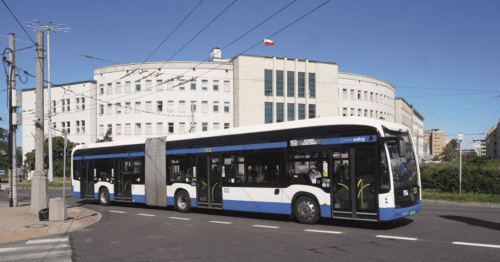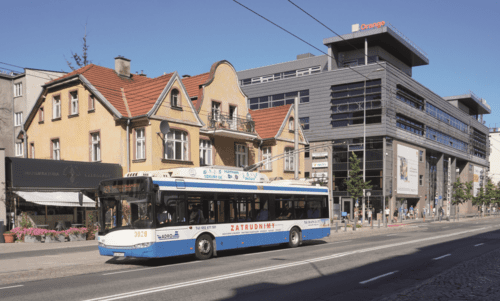
Andrew Thompson takes a short look at operations in the Polish port city of Gdynia, home to Poland’s largest trolleybus network
The Polish port city of Gdynia boasts one of the country’s most important maritime harbours on the Baltic Sea. With roughly 242,000 residents it is part of the larger tri-city conurbation that also includes Sopot and Gdańsk, and together this metropolitan area has a population of around 762,000. Gdynia was developed from little more than a fishing village to a strategically essential port city in the 1920s and 30s, following the re-establishment of an independent Polish nation state after World War I. At that time it was the country’s only seaside outlet and part of the so-called Polish corridor that separated different regions of German East Prussia.
Today, Gdynia has one of three trolleybus networks in Poland, and the country’s largest with around 37 miles of overhead wires. Between 2005 and 2007 alone, around 10.5km of new wires were added thanks to EU finding, and some routes also extend beyond the wires thanks to battery hybrid trolleybuses. The system was first established in 1943, during German occupation in the middle of World War II; wartime need to counteract diesel fuel shortages played a large part in the decision to electrify the Gdynia bus system at that time.
Currently, the Gdynia trolleybus network features 19 routes, although some only run on a limited timetable. One major trunk route served by three different trolleybus lines also passes into the neighbouring city of Sopot to the south. In total there are three different trolleybus depots and six different substations for electrical supply. The fleet consists of over 100 trolleybuses, the newest 12m rigid and 18m articulated Solaris Trollinos having been delivered by domestic bus builder Solaris in 2019, with follow-up orders also being supplied in 2022/23. These are fitted with traction batteries for flexible off-wire range extension. In August 2024, operator PKT put out a tender for another six 12m battery trolleybuses intended to boost busy line 25.
As a tourist attraction, the municipal trolleybus operator PKT also runs the heritage trolleybus line 326 on Sundays and public holidays during the summer season. This features four different vintage vehicles, the oldest of which is the Swiss-built Saurer type 4TIILM from 1957, which previously ran in St Gallen, Switzerland, from 1957 to 1992, then in the Polish capital Warsaw until 1995. It has been in Gdynia since 2001.
Aside from suburban rail, the trolley buses are the backbone of public transport in the city and are also supplemented by other diesel and electric bus routes that run independent of the overhead wires. Quite distinctly, there is a separate operating company, ZKM, for these services. Since 2021 a total of 24 Mercedes-Benz eCitaros have been supplied to ZKM, in what was the company’s first significant electric bus order from a Polish public transport operator. From this sub-fleet, 16 are normal 12m buses and eight are articulated 18m vehicles.


